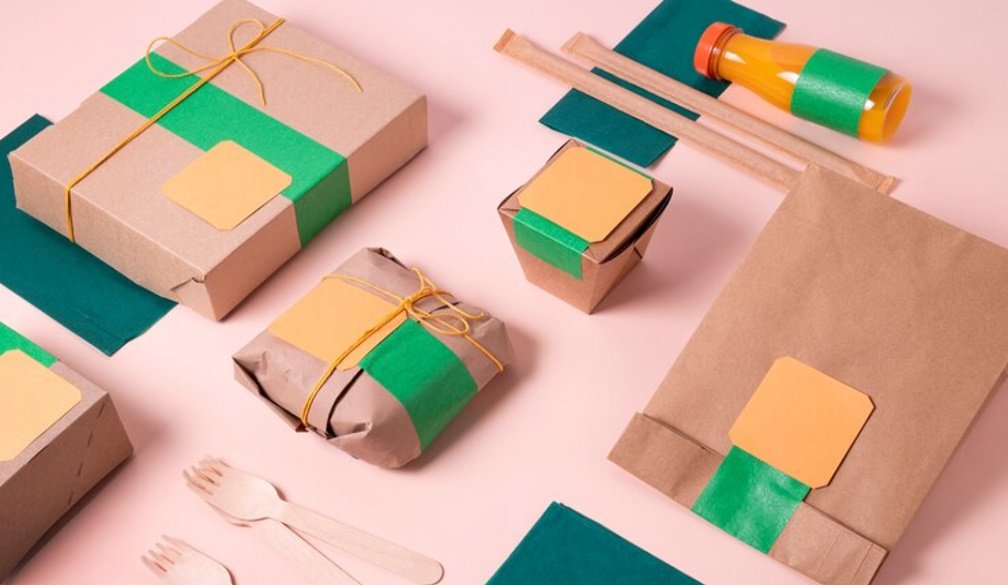The Rise of Biodegradable and Compostable Packaging

The first thing that businesses learn regarding their consumers is that their expectations are forever evolving. Nowadays, when a consumer buys something, the first question they ask is if there is an eco-friendly option for it. There is growing environmental awareness, especially in terms of conventional packaging materials and their impact on the environment.
Plastic waste can now be greatly replaced by the demand for more sustainable options, such as biodegradable and compostable packaging, in a packaging supply company. This material will have a minimal effect on the planet by solving the plastic waste problem.
What is Biodegradable and Compostable Packaging?
Biodegradable is different from compostable. Biodegradable implies breaking down with time while partially remaining intact, whereas compostable breaks down and makes organic matter that fertilises the soil.
The most widely used materials in such packaging are:
Polylactic Acid (PLA)
PLA is a bioplastic obtained from renewable sources such as cornstarch or sugarcane. Its production involves thermoplastic polymer that is biodegradable and compostable. The used of PLA is in the production of bags, cups, and food containers. PLA has excellent transparency, tensile strength, and heat resistance. One benefit of PLA is that it is a green alternative to conventional plastic packaging materials but with comparable performance characteristics.
Cornstarch
Cornstarch is a biodegradable and compostable natural polymer used to make various packaging products, such as bags, plates, and cutlery. Its rigidity and flexibility make it less flexible than PLA-based packaging. It is also the cheapest, making it popular among businesses that want to reduce their environmental footprint without burning a hole in their pockets.
Sugarcane
Another recyclable raw material that can be used in designing biodegradable packaging is sugarcane. The sugarcane plant's raw material essentially consists of bagasse, the fibrous residue left after extracting sugarcane juice. Bagasse is a natural, biodegradable, and compostable material that has been very useful in producing different packaging products, such as plates, cups, bowls, etc. Sugarcane-based packaging is tough but relatively natural-looking.
Certifications and Standards
Some certifications and standards have emerged to ensure that biodegradable and compostable packaging meets particular standards. These include:
AS 4736-2006
This is an Australian standard. It defines the need for plastic materials that intend to biodegrade in commercial and municipal composting facilities. It encompasses the decomposing period and toxicity, among many other criteria.
Seedling Logo
This standard is supported by AS 4736-2006. It is implemented both in New Zealand and Australia. The product must pass through the following compliance to qualify for the seedling logo:
- Undergoes rigorous testing regime by the independent accredited laboratory
- Obtained from the biodegradable products supplier
- Audited by the independent third-party technical auditor
- Has a unique certification number
ABA Number
Any product in the Australasian Bioplastics Association that traces the materials making up the product needs an ABA number to qualify for claims.
Environmental Benefits of Biodegradable and Compostable Packaging
Reduced Landfill Waste
Biodegradable and compostable packaging materials are much more advanced than common plastic packaging, which breaks down slowly with time. They prevent the accumulation of plastic waste in landfills, which causes environmental pollution and greenhouse gases.
Improved Soil Health
Compostable packaging could be added to compost piles, where it decomposes to rich organic nutrients. The organic nutrients would then be used to enrich the soil, making it fertile for plant growth. This would be very useful to agriculture and gardening in reducing the need for synthetic fertilisers that are harmful to the environment.
Lower Carbons
On the other hand, some biodegradable and compostable packaging packages have a low carbon impact compared to plastic packages. Many raw materials used in developing green products are renewable, such as cornstarch or sugarcane. Additionally, energy usage is lower, and there are fewer greenhouse gases at manufacturing time for biodegradable and compostable packaging.
Protection of Marine Ecosystem
Biodegradable and compostable packaging materials do not affect the marine ecosystem as compared to normal plastic packaging. If the material breaks down in the ocean, it decomposes into smaller pieces and cannot cause huge destruction to marine species. This is generally true today, with more concern over the problems of plastic waste growing up in our oceans and killing marines.
The Future of Biodegradable and Compostable Packaging
Biodegradable and compostable packaging would certainly shine bright. Given that demand for sustainable products is still increasing, we shall witness even more exciting things and innovations in this regard. Government policies and regulations may further encourage the active adoption of biodegradable and compostable packaging.
Conclusion
An effective solution to plastic waste is biodegradable and compostable packaging. A decrease in landfill waste creates good health for soils, thus reducing carbon emissions.
Many challenges await now, but the outlook for biodegradable and compostable packaging is still optimistic. It will increase if we decide consciously to support companies that are leaders in the domain of sustainability.

















